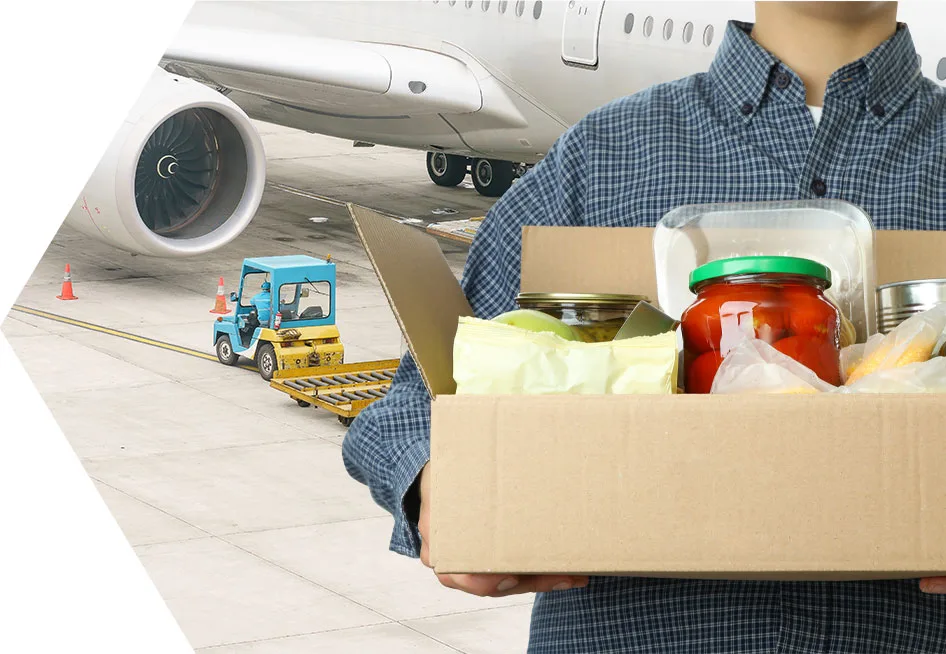As a freight forwarder and logistics company, Hamrahdezh understands the importance of transporting perishable goods efficiently and effectively. Perishable goods refer to any cargo that has a limited shelf life and requires temperature-controlled environments to maintain their quality and freshness. In this article, we will discuss the different types of perishable goods, the benefits and challenges of perishable goods air freight, regulations for transporting perishables, best practices for packing, and how to ensure a successful shipment.
What are the Types of Perishable Goods?
Perishable goods can be divided into several categories, including:
- Fresh produce (fruits, vegetables)
- Flowers and plants
- Live animals
- Pharmaceuticals
- Seafood
- Meat and poultry
- Dairy products
- Chocolate and confectionery
- Wine and spirits
Each category has its unique requirements in terms of temperature, humidity, and handling.
Benefits of Perishable Goods Air Freight
Air freight is an ideal mode of transportation for perishable goods due to its speed and efficiency. Some of the benefits of perishable goods air freight include:
- Faster delivery times
- Reduced transit times
- Lower risk of spoilage
- Better control of the cold chain management
- Increased flexibility in terms of flight schedules and availability
- Improved visibility and tracking throughout the transportation process
Challenges of Perishable Goods Air Freight
While air freight offers several benefits for perishable goods, there are also some challenges that need to be addressed, such as:
- High transportation costs
- Limited cargo capacity on aircraft
- Restrictions on the types of goods that can be transported by air cargo
- Limited availability of specialized equipment (e.g., refrigerated containers, temperature-controlled boxes)
- Adherence to strict regulations and standards for perishable goods transportation
Applying Regulations to Perishables Cargo
To ensure the safe and efficient transport of perishable goods, it is essential to comply with regulations and standards set by various organizations such as IATA (International Air Transport Association) and governmental customs and import/export regulations. This includes adhering to packaging requirements, labeling, and documentation to maintain the integrity of the cold chain management.
Best Practices for Perishable Goods Air Freight
To minimize the risk of spoilage, it is crucial to follow best practices when packing and transporting perishable goods by air cargo. Some of the best practices include:
- Ensuring the cargo is packed in suitable containers such as insulated boxes, or refrigerated containers
- Using proper labeling to identify the nature of goods and any specific handling instructions.
- Verifying that the correct temperature range is set, monitored and controlled throughout the transportation process.
- Choosing a reliable and experienced logistics partner like Hamrahdezh with a good track record of successful perishable logistics management.
How to Pack for Perishable Air Freight?
Proper packing is critical to ensure that perishable goods reach their destination in optimal condition. Here are some tips on how to pack for perishable air freight:
- Use suitable packaging materials such as insulated boxes, moisture-resistant liners, and temperature-controlled containers
- Follow IATA regulations on packaging requirements and labeling.
- Choose the appropriate temperature range based on the type of goods and the expected transit time
- Use enough ice or cooling agents to maintain the temperature during transit.
Conclusion
Perishable goods air freight presents a unique set of challenges and benefits, and it is critical to understand how to manage these goods to achieve a successful shipment. By following the best practices and regulations for perishable goods transportation, partnering with a reliable logistics company like Hamrahdezh, and paying close attention to packing requirements, it is possible to ensure that these valuable goods reach their destination




